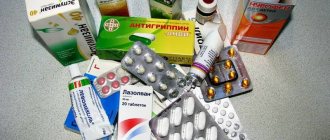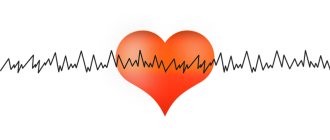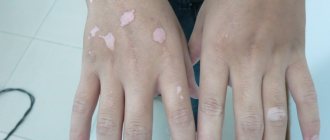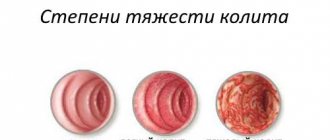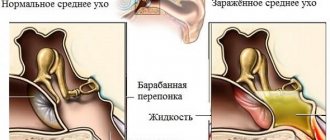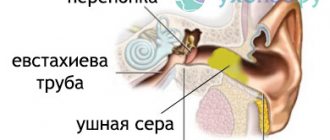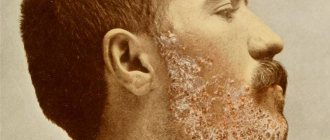Purulent sinusitis: features of the disease in adults and children
Sinusitis is an inflammation of the maxillary sinus, which is also called the maxillary sinus. It is the most common among sinusitis. The maxillary sinuses, as their name suggests, are located in the area above the jaw. They are paired and located on both sides of the face.
As a rule, sinusitis develops due to infection. There are cases when the disease is initially purulent in nature, but more often purulent processes are preceded by ordinary inflammation. Swelling of the mucous membrane of the sinuses leads to mucus retention in them. If treatment is not carried out, a favorable environment is created for the development of bacteria and a complication occurs in the form of purulent sinusitis.
Sinusitis is less common in children than in adults, but it is more difficult for them to cope with the disease. Therefore, parents need to be careful and aware of the rules for treating this disease.
Classification of sinusitis
There are several forms of sinusitis: acute and chronic. The clinical picture and treatment tactics depend on the form of the disease.
The following tips will help you distinguish the type of sinusitis:
- acute purulent sinusitis begins suddenly with a sharp onset of symptoms. It lasts 1-2 weeks (maximum a month);
- Chronic purulent sinusitis is diagnosed if symptoms persist for more than 1 month or acute inflammation occurs more than 5 times in 1 year. The chronic form is characterized by alternating periods of remissions and exacerbations, and the disease can last for years. Manifestations of chronic sinusitis (especially during remission) are less pronounced than in acute sinusitis: there is no severe pain, profuse discharge or fever, but nasal function deteriorates slightly. It can all end in the formation of polyps.
Acute sinusitis can become chronic if it is not treated correctly or is not fully treated. To get rid of the latter you will have to make a lot of effort and spend more than one month.
Reasons for development
The main causative agents of the purulent form of sinusitis are bacteria: streptococci, staphylococci, Haemophilus influenzae, anaerobes.
The development of a purulent form of the disease is most often caused by bacteria
Sinusitis can occur in the presence of carious molars adjacent to the lower wall of the sinus, after operations in the nasal cavity or on the upper jaw. Chronic foci of infections also play a significant role, from which bacteria can be spread hematogenously.
For the occurrence of sinusitis, general and local predisposing factors are of great importance:
- the presence of cysts, adenoids or polyps in the nose (polypous sinusitis);
- deviated nasal septum;
- congenital narrowness of the nasal passages;
- allergic rhinitis;
- regular and long-term use of nasal drops, leading to atrophy of the nasal mucosa;
- concomitant chronic diseases;
- general decrease in immunity.
Also, an important role in the development of acute and chronic sinusitis is played by disruption of the normal function of the mucociliary apparatus of the mucous membrane, caused by unfavorable environmental factors, for example, cold air, atmospheric pollution with industrial gases.
Causes of purulent sinusitis
Acute purulent sinusitis is most often caused by bacteria called streptococci and staphylococci, and less commonly by pneumococci.
You can become infected with them in several ways:
- through contaminated water when swimming in a river, pool, etc.;
- through dirty hands;
- due to infection from the oral cavity (this happens with caries, dental surgery);
- in case of injury to the nose and sinuses.
Autoinfection also occurs, when inflammation is provoked by those bacteria that live in the nose in a normal state. When the body's defenses are weakened, they can become aggressive.
Other causes of sinusitis are:
- respiratory diseases (rhinitis, bronchitis, tracheitis);
- flu, colds and other viruses;
- fungal infection.
Often, especially in children, a virus infection occurs first (it can be caught from a sick person), and then a bacterial infection occurs.
Factors that contribute to the occurrence of sinusitis and other ENT diseases include hypothermia, weak immunity, pathologies of the sinonasal complex, and allergies.
Causes
The cause of the disease is untreated acute catarrhal sinusitis, dental caries, as well as the presence of persistent infection in the oral and nasal cavities. The disease may be preceded by tonsillitis, flu, scarlet fever, acute rhinitis and tonsillitis. Microorganisms multiply in an optimal environment and lead to swelling of the mucous layer, which eventually becomes purulent. At the first symptoms, the disease is often mistaken for rhinitis, but then the condition only worsens. With reduced immunity, inflammation of the maxillary sinuses may occur, which leads to purulent sinusitis. The normal functioning of the immune system controls the number of pathogenic microorganisms on the nasal mucosa and prevents the occurrence of disease. The cause of sinusitis may be:
- allergic swelling;
- the presence of a focus of chronic inflammation and bacterial infections;
- deviated nasal septum;
- frequent runny nose;
- mental stress;
- complication after acute respiratory infections or acute respiratory viral infections.
This information will help you find out which drops for dry nose are best.
Symptoms and signs of purulent sinusitis
Symptoms of purulent sinusitis are divided into 2 groups:
- local. The main ones are pain and pressure in the sinuses, blockage of breathing, and purulent discharge. The secondary ones include decreased sense of smell, unpleasant odor in the nose;
- general (feeling unwell, weakness, headache, fever).
The intensity of pain varies from mild to severe. It can be pulsating, piercing, drilling. The pain often intensifies when the head is tilted forward. Some people experience pain on palpation in the sinus area. The temperature rises to subfebrile or febrile levels. Nasal discharge is viscous and thick in nature, it may be green or yellow in color, as well as blood.
Each individual person has their own set of symptoms of purulent sinusitis. The course of the disease is influenced by the state of the patient’s immune defense, the presence of other diseases and the virulence (aggressiveness) of the infection. Purulent sinusitis in children, as a rule, is more severe, with severe deterioration of the condition.
Diagnosis of the disease
To diagnose purulent sinusitis, it is necessary to undergo an examination of the nose (rhinoscopy). The disease is indicated by pronounced infiltration of the mucous membrane, as well as purulent-serous discharge on its surface. Since examination data cannot always determine the type of sinusitis, the doctor may prescribe an x-ray of the paranasal sinuses. The image will show in which area the pus has accumulated.
After this, a diagnostic puncture of the sinus is sometimes performed to take a sample of fluid from it. It is examined for microflora and it is determined which bacteria provoked the inflammation.
Additional tests that help make a diagnosis or detect complications include:
- CT scan;
- endoscopic examination of the nose;
- Ultrasound.
Depending on the severity of the disease, certain medications are then prescribed and the patient is sent home for treatment or referred to a hospital.
Diagnostics
Diagnosis of bacterial inflammation of the maxillary sinuses is aimed at establishing the cause of the disease and selecting the necessary treatment. To confirm the diagnosis, the following types of diagnostics are prescribed:
Visual examination, collection of medical history, patient complaints and palpation of possible foci of inflammation.- Rhinoscopy followed by collection of mucosal epithelium and secreted secretions from the nasal cavity. The procedure is necessary to identify the pathogen through bacteriological examination: culture and determination of sensitivity to antimicrobial groups.
- Blood test to detect the inflammatory process.
- X-ray of the paranasal sinuses. An x-ray allows you to see the affected areas. However, in some cases, due to the presence of pus, identification is extremely difficult.
- MRI and CT are the newest methods for diagnosing sinusitis, but their cost is slightly high, so they are used less often.
Purulent sinusitis is a common disease and the clinical signs are familiar to otolaryngologists, so establishing a diagnosis is not difficult, even based on external symptoms.
How and with what to treat purulent sinusitis in adults and children?
The main method of treating purulent sinusitis is antibiotic therapy. Most often, both adults and children are prescribed penicillin antibiotics (“Ampicillin”, “Amoxicillin”). Other antibiotics (Tetracycline, Sumamed, Azithromycin), as well as sulfonamide drugs, for example, Sulfadimezin, are also suitable.
Note! If one antibiotic for purulent sinusitis does not have an effect on the 2-3rd day of treatment, then you need to change the drug.
During treatment, the patient needs bed rest. Drinking plenty of fluids and fresh air is also recommended. If the temperature rises above 38o and there is severe pain, you need to take antipyretic drugs (Paracetamol or Nurofen) up to 4 times a day. They are available for children and adults. Powerful painkillers should not be given to children.
A complex of vasoconstrictor, antiseptic and anti-inflammatory agents is used locally:
- vasoconstrictor sprays and drops (“Galazolin”, “Otrivin”) help temporarily eliminate a runny nose, relieve swelling, and thereby improve breathing and improve the flow of mucus from the sinuses. Vasoconstrictors are not recommended for use for more than 5 days in a row;
- rinsing the nose with antiseptic solutions gives a good effect for sinusitis. They help flush out pus and mucus, and along with it, the infection. After washing, breathing and the condition of the mucous membrane improve. This way, recovery will occur faster. What medications should be used for sinusitis? Suitable products include saline solution (“No-sol”, “Dolphin”, “Physiomer”), “Furacilin” solution (0.5 tablets per 0.5 l of water), “Miramistin”, “Dioxdin”;
- anti-inflammatory and antibacterial drops and sprays. The advantage of such drugs is that they act directly at the site of inflammation. There are antibiotic combination medications that can be used in combination with oral antibiotics. You can also pay attention to preparations made from herbal ingredients.
The following table will help you choose the right product for yourself or your child:
| NAME OF THE DRUG AND FORM OF RELEASE | FROM WHAT AGE IS THE DRUG USED? | ACTIVE SUBSTANCE | EFFECT |
| Spray "Polydex" | From 15 years old | Neomycin, polymyxin B, dexamethasone, phenylephrine | Powerful antibacterial, anti-inflammatory, anti-edematous |
| Solution "Sialor" for nasal instillation | From 2 years | Silver proteinate | Antimicrobial and astringent |
| Drops "Pinosol" (analogue - "Pinovit") | From 2 years | Vegetable oils (eucalyptus, pine, peppermint), thymol, tocopherol acetate, guaiazulene | Antimicrobial, reparative |
| Spray "Isofra" | From 1 year | Antibiotic framycetin | Antibacterial |
| "Kameton" aerosol | From 5 years | Chlorobutanol hemihydrate, camphor, menthol | Anti-inflammatory, antibacterial, mild anesthetic. Normalizes breathing |
This is important to know! It is best to use the listed remedies in this order: rinse the nose, then drip vasoconstrictor drops, and when they work, use an anti-inflammatory spray.
There is a special medicine for sinusitis - Sinuforte. The drug reduces the viscosity of mucus and helps remove pus from sinusitis. Sinuforte is sold in powder form, from which you need to prepare a solution. It is poured into a special bottle with a sprayer. "Sinuforte" is indicated for purulent sinusitis in adults and children over 5 years of age.
Additionally, the doctor can prescribe physiotherapeutic procedures (UHF, microwave, electrophoresis) to the patient. They help relieve inflammation and speed up recovery.
Proper treatment helps remove pus from the sinuses within 1-2 weeks and stop inflammation. For the treatment of chronic sinusitis, the same drugs are used, but the duration of treatment is 1-3 months.
Drug treatment
The therapy prescribed by the doctor is aimed at relieving the patient of inflammation, improving blood supply and metabolic processes.
During the period of acute inflammatory process, when there is pus in the sinuses, medications of local and general action are used.
Local medications:
- Aquamaris (solution with sea salt) - used for rinsing the nose. Available in spray form.
- Dolphin is also a solution for rinsing the nasal cavity.
- Galazolin (xylometazoline) - enhances the outflow of pus due to the opening of the tubules connecting the sinuses and nose. Improves breathing through the nose. Apply 2 times during the day, a few drops in each nostril.
- Naphthyzin – constricts the blood vessels of the mucous membrane. Relieves swelling and redness of inflamed tissues. Helps improve breathing. A solution of 0.05% is prescribed for children and 0.1% for adults.
- Oxymetazoline – A vasoconstrictor. The principle of action and dosage are similar to the drugs described above.
These medications must be used for one week and then taken a break. If they are abused, dryness and irritation of the nasal mucosa occurs. In this case, the use of the drugs should be discontinued.
Local antiseptics:
- Polydexa with phenylephrine is an antibacterial drug in the form of a spray.
- Bioparox is a topical antiseptic. Does not allow bacteria to develop. Helps get rid of inflammation.
Agents that reduce sensitivity to pathogenic bacteria:
- Loratadine;
- Suprastin.
Antibiotics are used in the treatment of sinusitis:
- Clarithromycin;
- Midecamycin;
- Josamycin.
There are many antibiotics used in the treatment of sinusitis. To avoid harm to your health, do not self-medicate! Only a qualified specialist can prescribe competent treatment based on your individual characteristics.
Treatment of purulent sinusitis at home: rinsing, inhalation and compresses
In addition to the use of medications, procedures such as rinsing the nose with saline solution, inhalations and compresses on the sinus area are well suited for the treatment of purulent sinusitis. A little has already been said about nasal rinsing in the previous subtitle. Such procedures are very useful for any diseases of the nose, in addition, they are safe (rinsing with a weak saline solution is indicated for children from birth). At home, you can prepare a solution of table or sea salt at the rate of 1 tbsp. per liter of water (for children the dose is 1 tsp).
How to do rinsing?
- to infuse liquid into the nose, use a clean syringe, a small syringe or a Neti pot;
- first clear your nose of mucus;
- lean forward a little and turn your head to the side;
- pour the solution into the nostril that is located above (you need to pour in up to 200 ml of liquid at a time);
- repeat on the second side.
To prevent pus from accumulating during sinusitis, rinsing with hydrogen peroxide will help. It should be diluted in the proportion of 3 drops per 150 ml of boiled water. For sinusitis, peroxide breaks down the accumulated viscous pus and destroys the infection. You need to rinse your nose with it 2 times a day. You can also instill a solution of 1 tablespoon into your nose. water and 15 drops of peroxide. If you feel a strong burning sensation, then the solution needs to be made weaker.
In order to steam off dried mucus and improve breathing, steam inhalation is performed. To carry out the procedure, you will need an inhaler or any container (a saucepan, for example), as well as water with a temperature of about 40-60o (not boiling water). For additional effect, you can add pine, fir or eucalyptus essential oil. Also suitable for inhalation are a decoction of chamomile, lavender or sage, which have a mild anti-inflammatory effect.
Important! After inhalation or rinsing, do not go outside for 1-2 hours, especially in cold weather!
Another method of treatment at home is compresses. You can make a compress from clay (sold at the pharmacy). The clay is diluted with water to a dough consistency and cakes are made from it. Then the skin on the cheeks closer to the nose is lubricated with oil or cream, a piece of gauze is placed on top and a cake is placed on it. Keep the clay compress for 10 minutes.
Compresses are also made with a warm, boiled egg or heated salt, wrapped in thick cloth. Warm the sinus area on both sides for 10-20 minutes. Warm heating helps accelerate blood circulation and, accordingly, relieve pain and inflammation. But they can only be done if the stage of suppuration has ended and there is no high temperature.
We also recommend reading about inhalation with a nebulizer - a special device that sprays medications (anti-inflammatory, antibacterial, mucolytic) into tiny particles. Thanks to this property, it is possible to achieve penetration of drugs into remote corners of the respiratory system. This cannot be achieved with any steam inhalation or spray.
Prevention of sinusitis with suppuration
We found out how to treat purulent sinusitis at home. It remains to talk about prevention methods. It is necessary to do hardening, physical therapy, and spend more time in the fresh air. An important part of effective treatment at home and reducing the risk of subsequent relapses is maintaining proper humidity in the room. The air composition is improved with the help of home fountains and ionizing humidifiers.
If a slight runny nose occurs, warming, inhalation, and nasal rinsing should be performed. You should not get carried away with vasoconstrictor drops, otherwise you will soon have to worry about how to cure purulent sinusitis.
To strengthen the immune system, linden tea with lemon and honey, rosehip infusion, currants and cranberries are recommended. You should drink more citrus juice, eat pomegranate, fresh vegetables and herbs. Essential oils have a positive effect on the condition of the nasopharynx. They can be breathed through a dampened cloth, or diluted in water and sprayed around the room from a spray bottle. Eucalyptus and lemon tree oils disinfect well, destroy pathogenic microflora, and prevent drying of the nasal mucosa.
Surgery for purulent sinusitis
There are cases when appropriate drug therapy does not eliminate the infection, and prolonged illness can lead to serious complications. Then you have to resort to surgical treatment. If pus does not come out with sinusitis, puncture and puncture of the sinus will help. This operation involves puncturing the wall of the affected maxillary sinus and pumping out purulent contents from it.
At the end of the procedure, the sinus is washed with an antiseptic and a catheter is installed in the hole made for further rinsing. Puncture and rinsing gives a good result: the person feels relief on the same day. A total of 2 to 7 procedures may be required. More rinsing is done for chronic sinusitis.
Interesting fact! Another indicator for a sinus puncture is the need to provide material for analysis and subsequent selection of antibiotics. This may be necessary if treatment with some drug fails.
Also, surgery for purulent sinusitis is needed if there are polyps or adenoids in the nose. Then the nose is sanitized using endoscopic equipment.
Diagnosis of chronic sinusitis
For chronic sinusitis, the doctor uses various diagnostic techniques to make an accurate diagnosis:
- Collection of complaints, medical history, assessment of clinical symptoms. The doctor must carefully examine your complaints and collect a detailed medical history. Do not hesitate to tell all the details, be prepared to answer questions about your feelings, the last exacerbation, the frequency of exacerbations. If there are any special symptoms or signs of illness that the doctor did not ask you about, tell him about that too;
- X-ray examination. The doctor orders an x-ray of the sinuses. In chronic disease, there is a decrease in the lumen of the maxillary sinus and its darkening. This indicates a strong proliferation of the mucous membrane and the presence of exudate.
- CT scan. To make a more accurate diagnosis and establish the cause of a chronic disease, CT is used. It gives the doctor information about the structure of your skull in three-dimensional space, showing the features of the location of the sinuses, teeth, and nasal septum;
- Endoscopy. The use of endoscopic examination allows you to confirm the diagnosis, examine the sinus cavity, see polyps, granulation tissue, neoplasm, and assess the condition of the mucous membrane;
- Laboratory research. In some cases (especially if treatment is ineffective), the doctor prescribes bacteriological culture. It is carried out to determine the strain of bacteria or identify fungal flora in the maxillary sinus.
Why is purulent sinusitis dangerous?
Complications of purulent sinusitis include:
- Decreased sense of smell (hyposmia) or complete loss of smell (anosmia). These effects may be temporary or permanent;
- Mucocele. It is a complication of sinusitis caused by impaired drainage of mucus from the sinuses. Symptoms of a mucocele may temporarily improve with a course of antibiotics, but surgery is usually necessary;
- Infection of surrounding tissues. Infections of the structures surrounding the sinuses are uncommon complications of sinusitis. These structures include the eye, nearby blood vessels, brain, and bones. Spread of inflammation into the eye can cause vision changes, orbital cellulitis, or orbital abscess. Damage to the bones causes osteomyelitis, and to the brain – meningitis or abscess. Such conditions require immediate and aggressive treatment, including hospitalization, intravenous medications, and/or surgery.
To prevent complications of sinusitis, it is necessary to start taking antibiotics in a timely manner and drink them until the end of the prescribed period. And if your condition worsens significantly, it is important not to hesitate to contact an ambulance.
Disease prevention
Here are some tips for preventing purulent sinusitis:
- do not forget to wash your hands and avoid people suffering from ARVI;
- Getting a flu vaccine each year will help prevent the flu and subsequent upper respiratory tract infections;
- a diet rich in antioxidants, especially fresh, dark fruits and vegetables, helps strengthen the immune system;
- People who have allergies should choose an appropriate antihistamine and take it during the allergy season;
- Daily irrigation of the nose with a saline solution helps keep the nasal passages moist and eliminate unwanted infectious agents.
People with chronic sinusitis should avoid situations and activities that may aggravate the condition, such as cigarette smoke, dusty or dry air, scuba diving or swimming in chlorinated pools.
